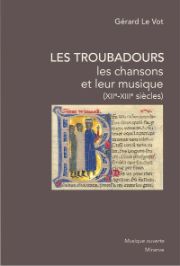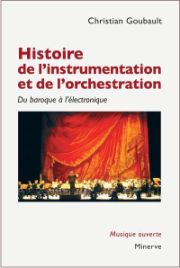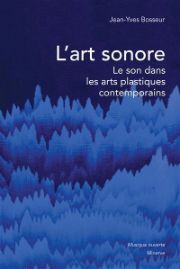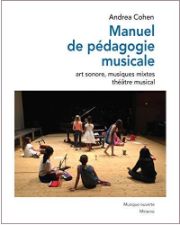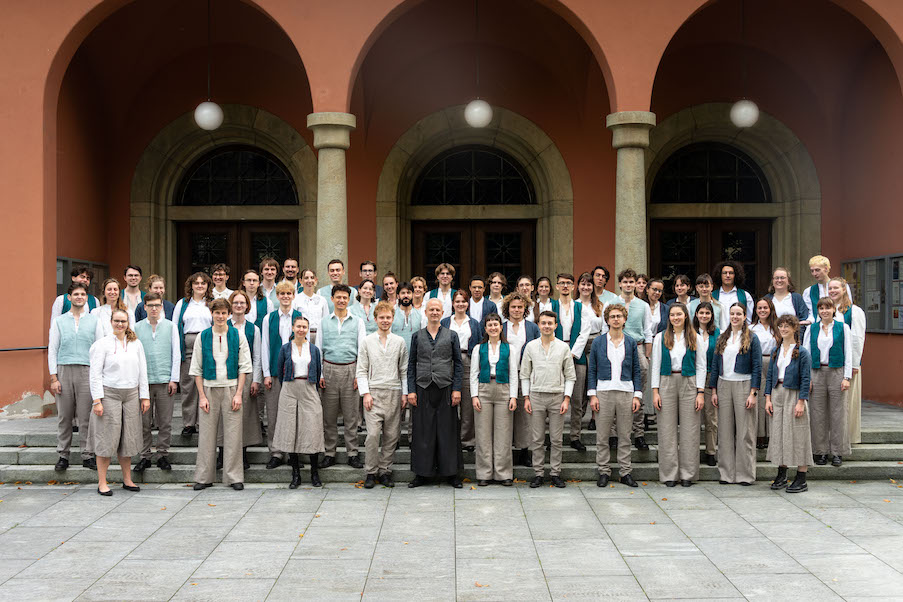From troubadours to contemporary music
The music of the troubadours, a history of instrumentation and orchestration, a presentation of the art of sound and its creators, and a manual of musical pedagogy: these are the subjects of some of the recent publications from Editions Minerve.
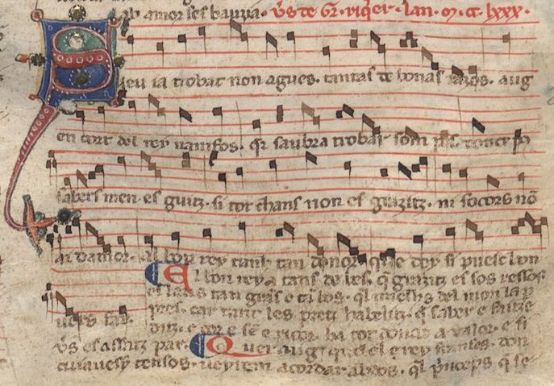
The French-speaking world has long lacked a synthesis of current knowledge on troubadours and their music. Gérard Le Vot, one of the most renowned specialists in this repertoire, to which he has devoted over forty years of research, has now published such a work. He summarizes the historical and sociological context that saw the birth and death of Occitan lyricism, introduces each trobador, from Guillaume IX d'Aquitaine to Guiraut Riquier, and describes the late manuscript sources that fix these works close to oral culture. Particularly interesting are the studies of the different types of song, their various notations, their formal elaboration (structures, metrics, modes and genres, but also formulas, melodic borrowings and re-employments, variants, ornaments and cadences), the relationship between poem and melody, declamation and sentiments expressed, the dialectic between invention and transmission, from a living musical perspective and bearing in mind that the cansos that have come down to us represent only a small part of the original corpus. The vast panorama of issues dealt with makes this book an accessible and fascinating summation of the art of trobar.
Four centuries of orchestration
As the first edition was quickly sold out, a new printing of theHistory of instrumentation and orchestration (two terms that were only used from the 1820/30s onwards) by Christian Goubault is all the more commendable given that such a synthesis is relatively rare, especially when it embraces the entire period concerned, from the end of the Renaissance to the present day - the chapters devoted to the 20th century, from Debussy to the spectral school, proving especially successful. Unfortunately, the author passed away the same year his imposing volume was published, which perhaps explains a number of imperfections that could have been corrected by more thorough proof-reading or checking, including in the case of the numbers mentioned, which on several occasions are noted approximately. Two examples of the most disturbing errors: the description of a passage from the first movement of Beethoven's 9th Symphony in the middle of the analysis of the finale of the same work (p.117), possibly due to a mess in the manuscript; the curious mention of choirs in Saint-Saëns' 3rd Symphony (p.168), undoubtedly the result of poor deciphering (it should have read "strings"). However, these details can easily be clarified by studying the scores in question. Throughout his book, Christian Goubault describes a large number of excerpts from works by a large number of composers, passages that are particularly interesting from the point of view of orchestral treatment, thus pleasantly complementing the reading of orchestration treatises for musicians, while offering music lovers an in-depth approach and a wealth of information. Topics covered include the changing place of instruments on the orchestral score, the most important treatises on instrumentation and orchestration, the main orchestral techniques, arrangements and re-orchestrations, new musical instruments and the development of instrument making, particularly in the early 20th century, and more detailed analyses of a selection of 14 scores, for a better understanding of how timbres are used in orchestration.
A wealth of sound
Situated at the crossroads between music and the visual arts, multimedia works, installations and other sound sculptures form a constellation in which artists explore the multiple modalities of sound, often with fascinating creativity. Jean-Yves Bosseur is a connoisseur of this art of sound, which brings together the visual and the auditory, and offers a wide range of portraits, interspersed with personal accounts and a few interviews, of this multifaceted field that ranges from new instruments (in particular those designed by Harry Partch, the Baschet brothers or the Swiss Oscar Wiggli) to Jaume Plensa's music of silence, via wind harps drifting on rafts, loudspeaker diaphragms whose vibrations sculpt a thin layer of colored pigment, 800 Japanese bells attached to long rods and placed in a desert, distorted music boxes, ropes several meters long, not to mention the sounds of Tinguely's machine mechanisms, the activities of the Fluxus movement or Xenakis's diatopes and polytopes, to name but a few. The abundant imagination of the nearly 250 creators, most of them unclassifiable, cited in this book knows no bounds, including in the choice of materials (from work on primordial elements such as water or air to digital technologies), in the various situations (from performance with active audience participation to autonomous installation independent of the presence or absence of listeners) or in the acoustic interactions with natural sites or architecture.
Pedagogical use of contemporary music
This book, written by teacher, performer and composer Andrea Cohen, aims to make playful use of certain writing and improvisation techniques in contemporary and non-European music, at school and in music schools, in order to explore the world of sound, develop the ability to hear as well as the imagination and creativity, and enable students to find and rediscover musical pleasure through lively, joyful practice. To this end, this manual offers a considerable number of practical exercises or open-ended models for action, inspired by musical theater, sound and radio art (capturing and manipulating sounds, editing and mixing, etc.) and mixed music (combining performed music and electroacoustics).
Gérard Le Vot: Les Troubadours : les chansons et leur musique, 396 p., € 33.00, Éditions Minerve, Paris 2019, ISBN 978-2-86931-155-8
Christian Goubault: Histoire de l'intrumentation et de l'orchestration, Du baroque à l'électronique, Second edition, 480 p., € 33.00, Éditions Minerve, Paris 2017,
ISBN 978-2-86931-146-6
Jean-Yves Bosseur: L'Art sonore. Le son dans les arts plastiques contemporains, 252 p.,
€ 23.00, Éditions Minerve, Paris 2020, ISBN 978-2-86931-160-2
Andrea Cohen: Manuel de pédagogie musicale : art sonore, musiques mixtes, théâtre musical, 180 p., € 19.00, Éditions Minerve, Paris 2020, ISBN 978-2-86931-157-2






